Home>Gardening & Outdoor>Outdoor Structures>What Is Composite Decking Made Of
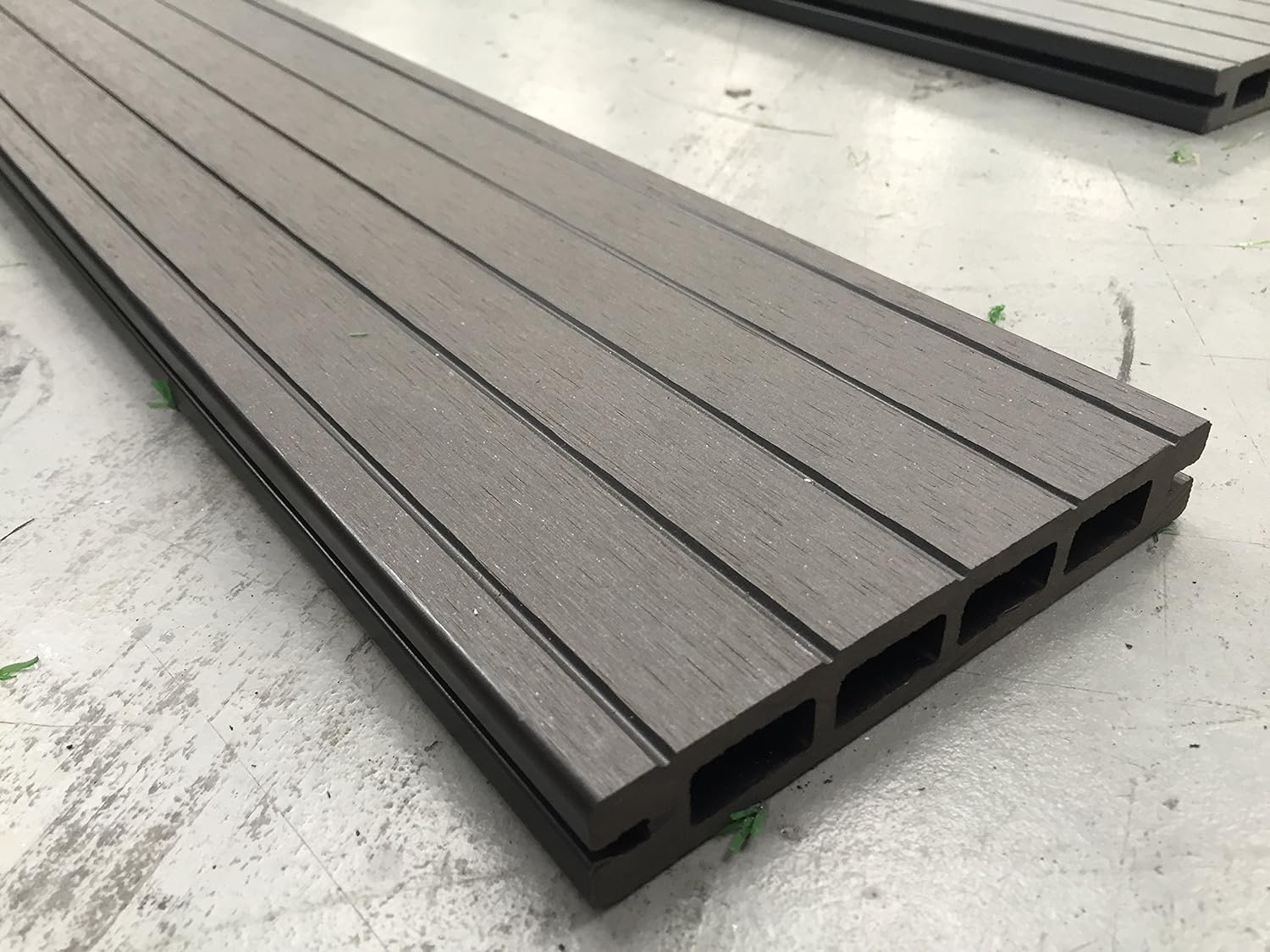

Outdoor Structures
What Is Composite Decking Made Of
Modified: January 14, 2024
Discover what composite decking is made of and how it can enhance your outdoor structures. Learn about the materials and benefits of composite decking.
(Many of the links in this article redirect to a specific reviewed product. Your purchase of these products through affiliate links helps to generate commission for Storables.com, at no extra cost. Learn more)
Introduction
Composite decking has revolutionized the outdoor living industry, offering a durable and eco-friendly alternative to traditional wood decking. As the demand for sustainable and low-maintenance outdoor structures continues to rise, composite decking has emerged as a popular choice for homeowners and builders alike.
In this article, we will delve into the fascinating world of composite decking, exploring its composition, manufacturing process, and the myriad benefits it offers. By understanding what composite decking is made of, you can make an informed decision when considering this innovative material for your outdoor living space.
Whether you're a seasoned DIY enthusiast or a homeowner looking to upgrade your deck, learning about the ingredients and manufacturing process of composite decking will provide valuable insights. Additionally, we will explore the environmental impact of composite decking, shedding light on its eco-friendly attributes.
Join us as we unravel the secrets behind composite decking and discover the remarkable features that set it apart from traditional wood decking. Let's embark on a journey to uncover the science and artistry behind this modern outdoor building material.
Key Takeaways:
- Composite decking is a durable and eco-friendly alternative to traditional wood decking, made from wood fibers, recycled plastic, and additives. It offers exceptional resilience, low maintenance, and diverse design options for outdoor living spaces.
- The manufacturing process of composite decking involves blending wood fibers, recycled plastic, and additives, followed by high-temperature extrusion and precision finishing. This results in a material that embodies sustainability, durability, and aesthetic versatility.
Read more: What Is Composite Decking
What Is Composite Decking?
Composite decking is a versatile and innovative building material designed for outdoor structures such as decks, patios, and boardwalks. Unlike traditional wood decking, composite decking is a blend of natural and synthetic materials, engineered to deliver exceptional durability, longevity, and low-maintenance performance.
One of the defining characteristics of composite decking is its composition, which typically includes a combination of wood fibers, recycled plastic, and various additives. This unique blend results in a product that captures the natural beauty of wood while offering enhanced resistance to rot, decay, and insect damage.
Composite decking is available in a wide array of colors, textures, and finishes, allowing homeowners and builders to achieve the desired aesthetic for their outdoor living spaces. Whether replicating the rich tones of tropical hardwoods or embracing modern, sleek designs, composite decking offers unparalleled versatility in design options.
Furthermore, composite decking is engineered to withstand the rigors of outdoor elements, including harsh UV rays, moisture, and temperature fluctuations. This resilience ensures that composite decking maintains its structural integrity and appearance over time, making it a compelling choice for outdoor applications in various climates.
As homeowners increasingly seek sustainable and low-maintenance building materials, composite decking has gained prominence for its eco-friendly attributes and long-term cost-effectiveness. By understanding the fundamental characteristics of composite decking, individuals can make informed decisions when planning and constructing outdoor living spaces that prioritize both aesthetics and performance.
Now that we have explored the essence of composite decking, it’s time to delve into the specific ingredients that constitute this innovative material. By unraveling the components of composite decking, we can gain a deeper appreciation for its remarkable properties and understand why it has become a preferred option for outdoor structures.
The Ingredients of Composite Decking
Composite decking derives its exceptional properties from a thoughtfully crafted combination of key ingredients. Understanding these components is essential to grasp the unique characteristics and benefits of this innovative building material.
At the core of composite decking’s composition are wood fibers, recycled plastic, and various additives, each playing a crucial role in enhancing the material’s performance and longevity.
Let’s delve into the specific ingredients that constitute composite decking:
Wood Fibers
Wood fibers, sourced from reclaimed or recycled wood materials, form an integral part of composite decking. These fibers contribute to the natural appearance of the decking while providing structural reinforcement. By utilizing wood fibers, composite decking captures the aesthetic appeal of wood without succumbing to common issues such as splintering, warping, or rotting. The incorporation of wood fibers also promotes sustainability by reducing the reliance on virgin wood resources.
Plastic
Recycled plastic, typically derived from post-consumer and post-industrial sources, serves as a binding agent in composite decking. The plastic component plays a pivotal role in enhancing the material’s resistance to moisture, decay, and insect damage. By repurposing plastic waste, composite decking not only offers a durable and long-lasting outdoor solution but also contributes to environmental conservation by reducing plastic pollution.
Read more: What Is A Composite Sink Made Of
Additives
Various additives, such as UV stabilizers, color pigments, and bonding agents, are meticulously blended into the composite decking formulation. UV stabilizers safeguard the material from sun-induced fading and degradation, ensuring long-term color retention and structural stability. Additionally, color pigments allow for a diverse range of aesthetic options, enabling homeowners to select decking that complements their outdoor surroundings. Bonding agents facilitate the seamless integration of the different components, ensuring uniformity and strength throughout the composite decking boards.
By synergistically combining wood fibers, recycled plastic, and purposeful additives, composite decking achieves a harmonious balance of natural beauty, durability, and sustainability. The meticulous selection and integration of these ingredients result in a resilient, low-maintenance material that embodies the best qualities of both wood and plastic.
Having explored the fundamental ingredients of composite decking, we can now delve into the intricate manufacturing process that transforms these components into the remarkable outdoor building material that has captured the attention of homeowners and builders worldwide.
Wood Fibers
Wood fibers play a pivotal role in the composition of composite decking, contributing to its natural appearance, structural integrity, and environmental sustainability. Derived from reclaimed or recycled wood materials, these fibers are carefully selected and processed to harness their inherent strength and aesthetic qualities.
One of the primary advantages of incorporating wood fibers into composite decking lies in the ability to emulate the visual appeal of natural wood without compromising on performance or sustainability. By utilizing reclaimed wood materials, composite decking reduces the demand for virgin wood resources, thereby promoting environmental conservation and responsible resource management.
Furthermore, the integration of wood fibers enhances the overall strength and rigidity of the composite decking boards, mitigating common issues associated with traditional wood, such as splintering, warping, and decay. This structural reinforcement ensures that composite decking maintains its form and functionality over time, even when subjected to the rigors of outdoor exposure and foot traffic.
Moreover, the natural texture and grain patterns inherent in wood fibers contribute to the authentic appearance of composite decking, creating a visually appealing outdoor surface that evokes the timeless charm of wood. Whether replicating the rich hues of exotic hardwoods or exuding the warmth of natural timber, composite decking enriched with wood fibers offers a diverse array of design options to suit various aesthetic preferences.
From an environmental standpoint, the utilization of wood fibers in composite decking aligns with sustainable practices, as it minimizes waste and reduces the reliance on freshly harvested timber. By repurposing reclaimed wood materials, composite decking embodies a commitment to eco-conscious manufacturing, making it an appealing choice for environmentally conscious homeowners and builders.
By harnessing the inherent strength, visual allure, and eco-friendly attributes of wood fibers, composite decking achieves a harmonious balance between natural aesthetics and modern performance. The thoughtful integration of wood fibers into the composite decking formulation underscores its commitment to sustainability, durability, and timeless appeal, making it a compelling choice for outdoor living spaces.
With a deeper understanding of the significance of wood fibers in composite decking, we can appreciate the seamless fusion of nature’s beauty and technological innovation that defines this remarkable outdoor building material.
Plastic
Recycled plastic serves as a fundamental component in the composition of composite decking, contributing to its durability, resistance to environmental elements, and eco-friendly attributes. Derived from post-consumer and post-industrial sources, recycled plastic undergoes a meticulous transformation process to become an essential binding agent in composite decking, offering a sustainable and long-lasting solution for outdoor structures.
One of the primary advantages of incorporating recycled plastic into composite decking lies in its remarkable ability to withstand moisture, decay, and insect damage. Unlike traditional wood decking, composite decking enriched with recycled plastic exhibits exceptional resilience in the face of environmental challenges, making it an ideal choice for outdoor applications in diverse climates.
By repurposing plastic waste, composite decking not only provides a durable and low-maintenance outdoor solution but also contributes to environmental conservation by reducing plastic pollution. This eco-conscious approach aligns with the growing emphasis on sustainable building practices, appealing to homeowners and builders seeking environmentally responsible alternatives for their outdoor living spaces.
Furthermore, the incorporation of recycled plastic enhances the overall longevity of composite decking, as it mitigates common issues associated with traditional wood, such as rotting, splintering, and warping. This durability ensures that composite decking maintains its structural integrity and aesthetic appeal over time, requiring minimal upkeep and offering long-term cost-effectiveness.
From a design perspective, the use of recycled plastic in composite decking allows for a diverse range of color options and finishes, enabling homeowners to customize their outdoor spaces according to their preferences. Whether seeking a contemporary, sleek appearance or a classic, natural aesthetic, composite decking enriched with recycled plastic offers versatility and aesthetic flexibility.
Moreover, the eco-friendly ethos of utilizing recycled plastic aligns with the principles of circular economy and sustainable resource management, contributing to a more responsible approach to material utilization in the construction industry. By repurposing plastic waste into a durable and high-performance building material, composite decking exemplifies the potential for innovative solutions to address environmental challenges.
Through the incorporation of recycled plastic, composite decking embodies a harmonious fusion of sustainability, durability, and aesthetic appeal, offering a compelling choice for outdoor living spaces that prioritize both performance and environmental responsibility.
With a deeper understanding of the significance of recycled plastic in composite decking, we can appreciate the seamless convergence of environmental stewardship and technological innovation that defines this remarkable outdoor building material.
Additives
Within the realm of composite decking, additives play a crucial role in enhancing the material’s durability, aesthetic diversity, and long-term performance. These purposeful components, meticulously incorporated into the composite decking formulation, contribute to its resilience against environmental stressors and its ability to maintain visual allure over time.
One of the key additives in composite decking is UV stabilizers, which serve as guardians against the detrimental effects of sun-induced fading and degradation. By integrating UV stabilizers into the formulation, composite decking exhibits remarkable resistance to color fading and structural deterioration, ensuring that it retains its visual vibrancy and integrity even when exposed to prolonged sunlight.
Furthermore, the inclusion of color pigments enables composite decking to offer a diverse array of aesthetic options, allowing homeowners to select decking that harmonizes with their outdoor surroundings and personal preferences. Whether seeking the rich tones of exotic hardwoods or contemporary, modern finishes, the availability of varied color pigments empowers individuals to customize their outdoor living spaces with a material that resonates with their vision.
Bonding agents represent another essential category of additives in composite decking, facilitating the seamless integration of wood fibers, recycled plastic, and other components. These agents ensure uniformity and strength throughout the composite decking boards, fostering structural cohesion and longevity. By promoting a robust bond between the constituent materials, bonding agents contribute to the overall stability and performance of composite decking, reinforcing its capacity to withstand the demands of outdoor use.
Moreover, the strategic incorporation of additives allows composite decking to exhibit enhanced resistance to moisture, mold, and mildew, further bolstering its suitability for outdoor applications. The comprehensive protection provided by these additives ensures that composite decking maintains its pristine appearance and structural integrity, requiring minimal maintenance and offering long-term durability.
By synergistically integrating UV stabilizers, color pigments, bonding agents, and other purposeful additives, composite decking achieves a harmonious balance between visual appeal, resilience, and low-maintenance performance. The meticulous selection and integration of these components underscore the material’s commitment to enduring quality and aesthetic versatility, making it a compelling choice for outdoor living spaces.
With a deeper understanding of the significance of additives in composite decking, we can appreciate the intricate blend of science and artistry that defines this remarkable outdoor building material, offering a synthesis of durability, beauty, and innovation.
The Manufacturing Process
The manufacturing of composite decking involves a meticulously orchestrated process that transforms raw materials into a resilient and aesthetically pleasing outdoor building material. This intricate journey from formulation to finished product showcases the seamless fusion of innovative technology and sustainable practices, resulting in a material that embodies the best qualities of both wood and plastic.
The process begins with the meticulous selection and preparation of wood fibers, sourced from reclaimed or recycled wood materials. These fibers undergo thorough cleaning and refinement to ensure their optimal strength, uniformity, and compatibility with the composite decking formulation. Simultaneously, recycled plastic, derived from post-consumer and post-industrial sources, undergoes a rigorous transformation process to achieve the desired properties for binding and reinforcement within the composite decking material.
Once the wood fibers and recycled plastic are prepared, they are carefully blended with purposeful additives, such as UV stabilizers, color pigments, and bonding agents, in precise proportions to form the composite decking formulation. This meticulous blending process ensures the uniform distribution of components, fostering structural integrity, aesthetic diversity, and long-term performance within the material.
The blended composite decking formulation is then subjected to high-temperature extrusion, a sophisticated manufacturing technique that molds the material into the desired shape and dimensions. Through this process, the composite decking formulation is transformed into durable, uniform boards, each exhibiting the natural texture, grain patterns, and aesthetic appeal reminiscent of wood.
Following the extrusion process, the composite decking boards undergo precision finishing, where surface textures, embossing, and protective coatings are applied to enhance their visual allure and resilience. This meticulous finishing stage ensures that the composite decking boards exhibit the desired aesthetic characteristics and performance attributes, ready to withstand the outdoor elements and foot traffic with enduring quality.
Throughout the manufacturing process, stringent quality control measures are implemented to verify the structural integrity, color consistency, and overall performance of the composite decking boards. By adhering to rigorous quality standards, manufacturers ensure that each batch of composite decking meets the highest benchmarks for durability, aesthetics, and environmental responsibility.
By unraveling the intricate manufacturing process of composite decking, we gain a deeper appreciation for the meticulous craftsmanship and technological innovation that converge to create a material that transcends the limitations of traditional wood and plastic. This process underscores the material’s commitment to sustainability, durability, and timeless appeal, making it a compelling choice for outdoor living spaces.
Benefits of Composite Decking
Composite decking offers a myriad of benefits that have positioned it as a preferred choice for outdoor living spaces, surpassing traditional wood decking in durability, aesthetics, and sustainability. Understanding the advantages of composite decking provides valuable insights for homeowners and builders seeking a versatile and long-lasting solution for their outdoor structures.
1. Exceptional Durability
Composite decking exhibits remarkable resistance to rot, decay, splintering, and insect damage, ensuring that it maintains its structural integrity and visual allure over time. This durability makes composite decking well-suited for outdoor applications, withstanding the rigors of varying climates and heavy foot traffic without requiring extensive maintenance.
2. Low Maintenance
Unlike wood decking, composite decking demands minimal upkeep, eliminating the need for staining, sealing, or regular sanding. Its resistance to moisture, mold, and mildew simplifies cleaning, allowing homeowners to enjoy their outdoor living spaces without the burden of labor-intensive maintenance tasks.
3. Aesthetic Versatility
Composite decking is available in a diverse range of colors, finishes, and textures, enabling homeowners to customize their outdoor spaces according to their design preferences. Whether seeking the timeless elegance of natural wood or the contemporary appeal of sleek, modern designs, composite decking offers versatile options to suit various aesthetic visions.
4. Eco-Friendly Attributes
By repurposing reclaimed wood materials and recycled plastic, composite decking embodies sustainable manufacturing practices, reducing the reliance on virgin wood resources and mitigating plastic waste. This eco-friendly approach aligns with the principles of environmental stewardship, appealing to individuals seeking responsible building materials for their outdoor living spaces.
5. Long-Term Cost-Effectiveness
While the initial investment in composite decking may be higher than traditional wood, its enduring durability and low-maintenance nature result in long-term cost savings. With minimal upkeep requirements and a prolonged lifespan, composite decking offers a compelling return on investment for homeowners seeking a durable and visually appealing outdoor solution.
6. Resilience to Outdoor Elements
Composite decking is engineered to withstand UV exposure, moisture, temperature fluctuations, and heavy use, ensuring that it maintains its color, texture, and structural integrity over time. This resilience makes composite decking an ideal choice for outdoor structures that endure the demands of varying weather conditions and frequent activity.
By embracing the benefits of composite decking, homeowners and builders can create outdoor living spaces that embody enduring quality, aesthetic diversity, and environmental responsibility. The remarkable properties of composite decking underscore its capacity to elevate outdoor structures, offering a compelling alternative to traditional wood decking.
Read more: What Color Composite Decking Is Best
Environmental Impact
Composite decking has emerged as an eco-conscious alternative to traditional wood decking, offering a sustainable and low-impact solution for outdoor structures. By understanding the environmental impact of composite decking, homeowners and builders can make informed decisions that prioritize both performance and environmental responsibility.
1. Sustainable Material Sourcing
Composite decking incorporates reclaimed wood materials and recycled plastic, reducing the demand for virgin wood resources and repurposing post-consumer and post-industrial plastic waste. This sustainable material sourcing minimizes the environmental footprint of composite decking, aligning with principles of responsible resource management and conservation.
2. Reduced Deforestation
By utilizing reclaimed wood materials in its composition, composite decking mitigates the need for extensive logging and deforestation, contributing to forest preservation and biodiversity conservation. This reduction in deforestation aligns with sustainable practices, promoting the preservation of natural ecosystems and habitats.
3. Plastic Waste Repurposing
Composite decking repurposes plastic waste, diverting it from landfills and oceans, thereby mitigating plastic pollution and contributing to a circular economy model. This approach addresses the environmental challenges associated with plastic waste, offering a constructive solution that promotes waste reduction and environmental stewardship.
Read more: What Is Better: Composite Or Wood Decking?
4. Long-Term Sustainability
Composite decking’s durability and longevity reduce the frequency of replacement and the associated environmental impact. By offering a long-lasting outdoor solution that requires minimal maintenance and exhibits resilience to outdoor elements, composite decking embodies a commitment to long-term sustainability, minimizing material waste and resource consumption.
5. Energy-Efficient Manufacturing
The manufacturing process of composite decking emphasizes energy efficiency and waste reduction, incorporating sustainable practices to minimize environmental impact. By optimizing manufacturing processes and resource utilization, composite decking manufacturers strive to reduce energy consumption and emissions, further enhancing the material’s eco-friendly attributes.
6. Eco-Conscious Consumer Choice
As homeowners increasingly prioritize sustainability and environmental responsibility, the adoption of composite decking reflects a conscious consumer choice that supports eco-friendly building materials. By selecting composite decking for outdoor structures, individuals contribute to the promotion of sustainable practices within the construction industry, fostering a collective commitment to environmental conservation.
By recognizing the environmental impact of composite decking, individuals can embrace a building material that embodies sustainable sourcing, waste reduction, and long-term durability. The eco-friendly attributes of composite decking underscore its capacity to elevate outdoor living spaces while minimizing environmental impact, offering a compelling choice for homeowners and builders seeking a responsible and enduring outdoor solution.
Conclusion
Composite decking represents a transformative advancement in outdoor building materials, offering a harmonious blend of natural aesthetics, durability, and sustainability. As we have embarked on a journey to unravel the secrets behind composite decking, we have gained a profound understanding of its composition, manufacturing process, and the myriad benefits it offers.
From the intricate integration of wood fibers, recycled plastic, and purposeful additives to the meticulous manufacturing process that yields resilient and visually appealing boards, composite decking exemplifies the convergence of innovative technology and eco-conscious practices. This synthesis of artistry and engineering has redefined outdoor living, providing homeowners and builders with a versatile, low-maintenance, and enduring solution for their outdoor structures.
The benefits of composite decking, ranging from exceptional durability and aesthetic versatility to its minimal environmental impact, underscore its capacity to elevate outdoor living spaces while embracing sustainable practices. By offering a material that captures the timeless allure of wood while mitigating the shortcomings of traditional wood decking, composite decking has become a compelling choice for those seeking enduring quality and environmental responsibility.
As we reflect on the environmental impact of composite decking, we recognize its role in reducing deforestation, repurposing plastic waste, and promoting sustainable material utilization. This eco-conscious approach aligns with the evolving ethos of responsible construction, appealing to individuals who seek to create outdoor spaces that harmonize with nature and minimize environmental impact.
By embracing composite decking, homeowners and builders contribute to a collective commitment to sustainability, resilience, and aesthetic diversity. This material transcends the limitations of conventional wood decking, offering a durable, low-maintenance, and visually captivating solution that embodies the ethos of modern outdoor living.
As we conclude this exploration of composite decking, we invite you to envision the possibilities it holds for your outdoor living space. Whether creating a serene deck for relaxation, a vibrant patio for entertainment, or a captivating boardwalk for leisurely strolls, composite decking stands as a testament to the seamless fusion of nature-inspired beauty and technological innovation.
Embrace the enduring allure, the sustainable ethos, and the remarkable resilience of composite decking as you embark on your journey to create outdoor spaces that inspire, endure, and harmonize with the environment. With composite decking, the vision of a timeless, low-maintenance, and eco-friendly outdoor oasis becomes a tangible reality, elevating the art of outdoor living to new heights.
Frequently Asked Questions about What Is Composite Decking Made Of
Was this page helpful?
At Storables.com, we guarantee accurate and reliable information. Our content, validated by Expert Board Contributors, is crafted following stringent Editorial Policies. We're committed to providing you with well-researched, expert-backed insights for all your informational needs.
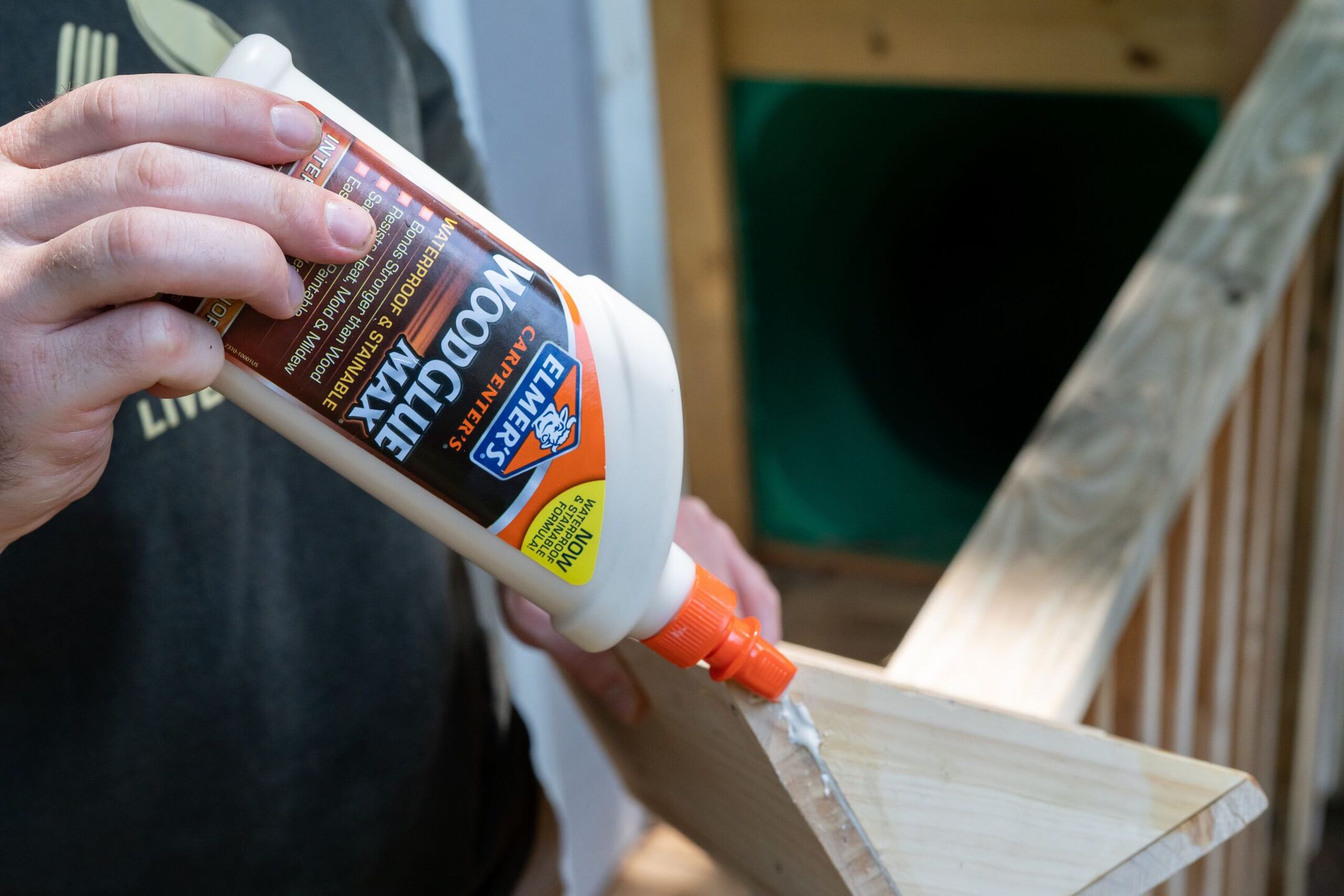
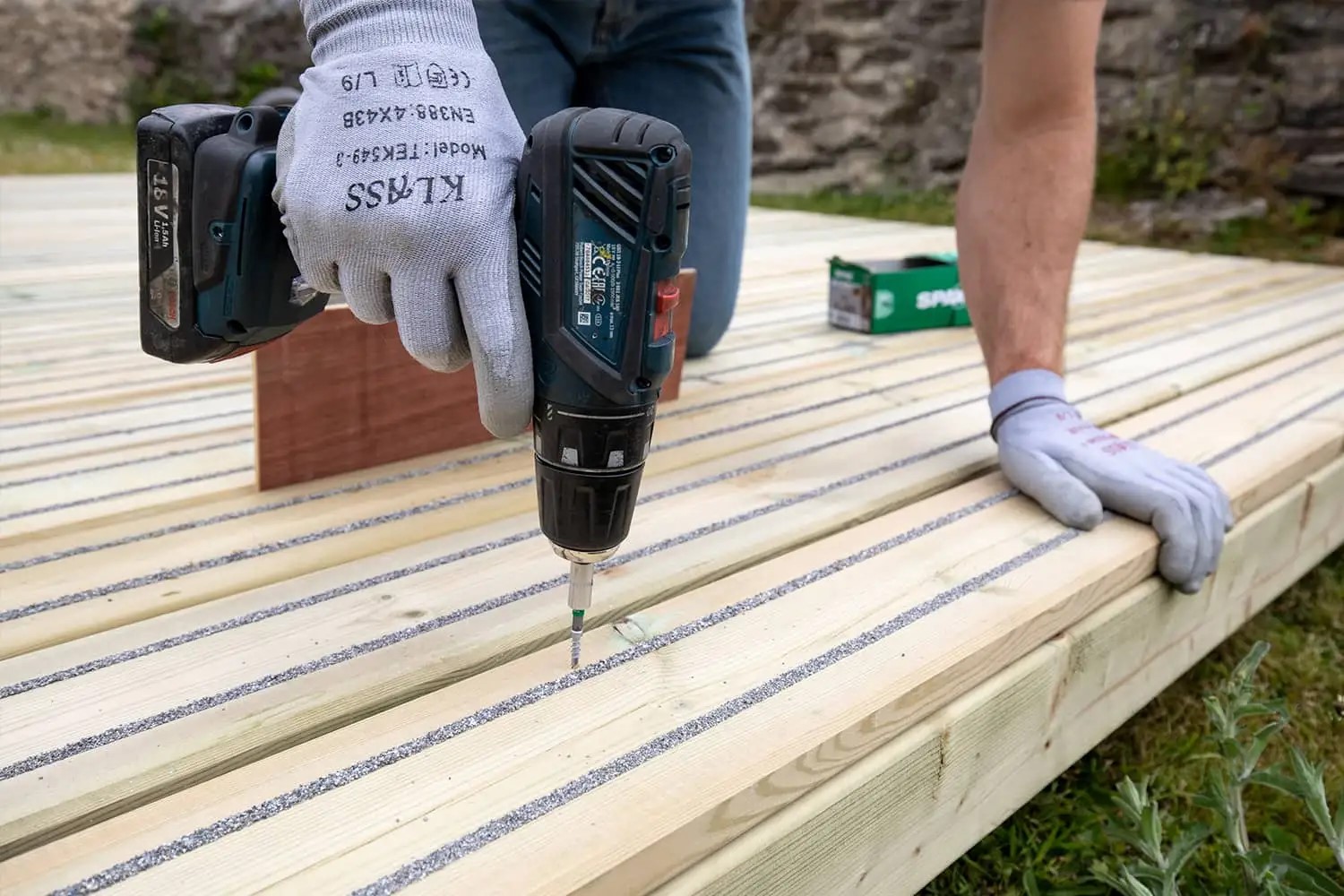
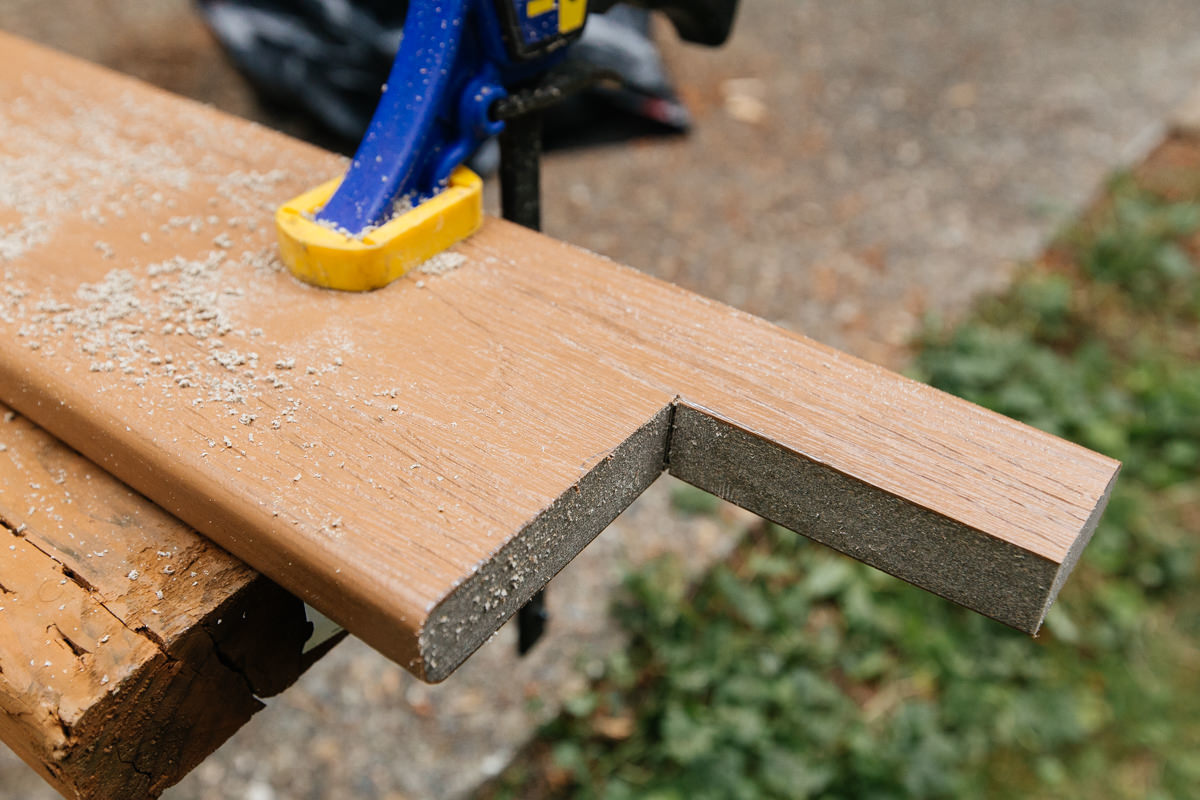
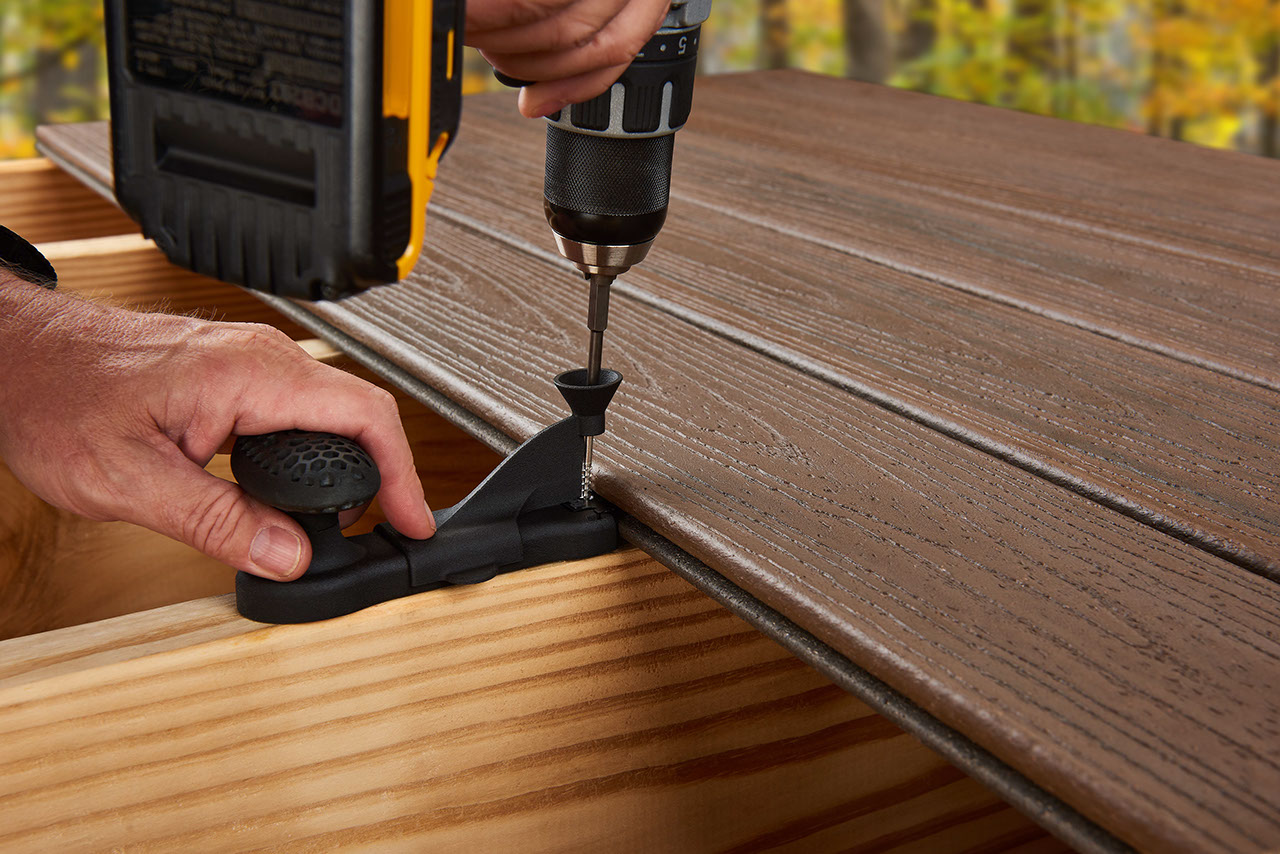


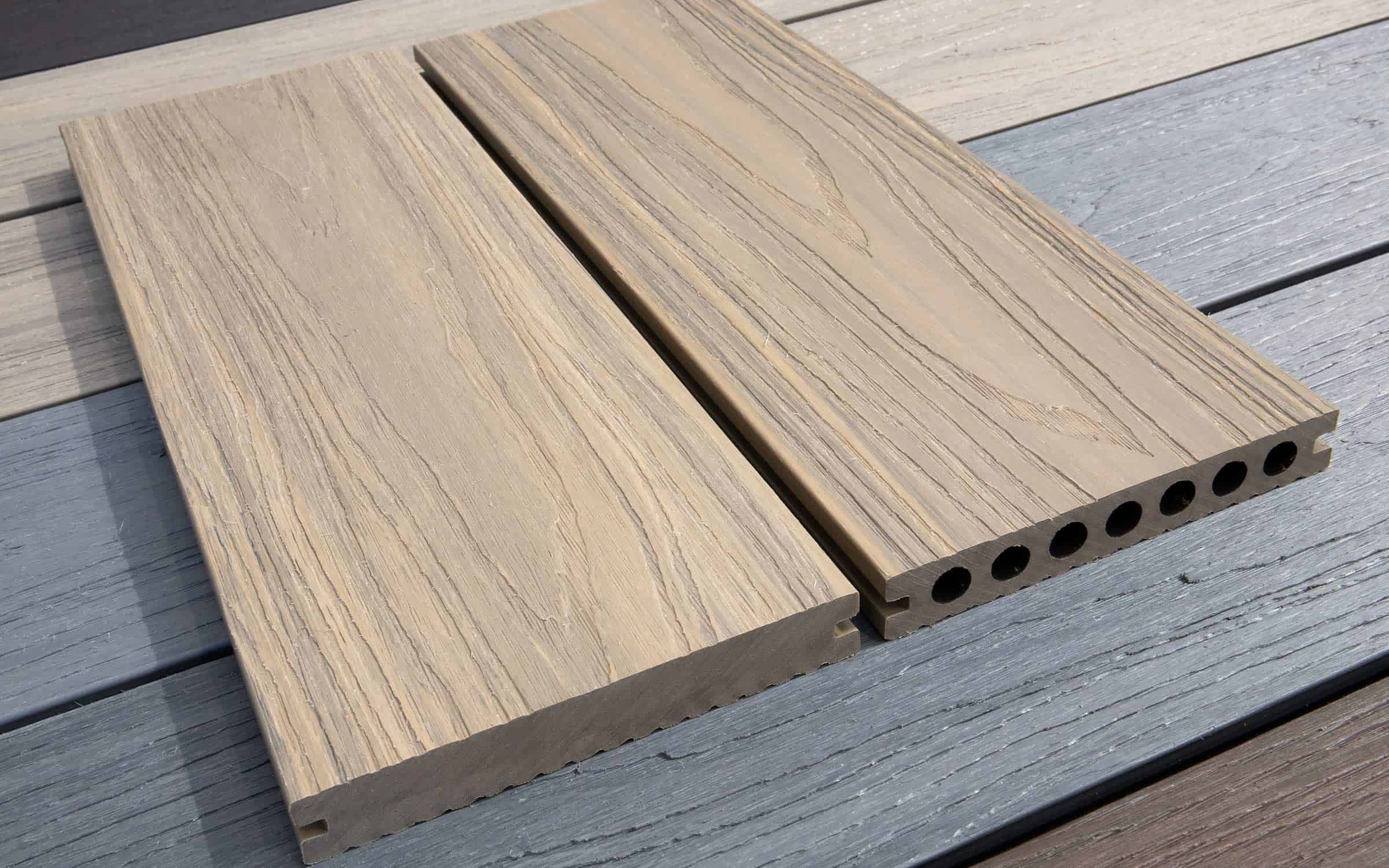


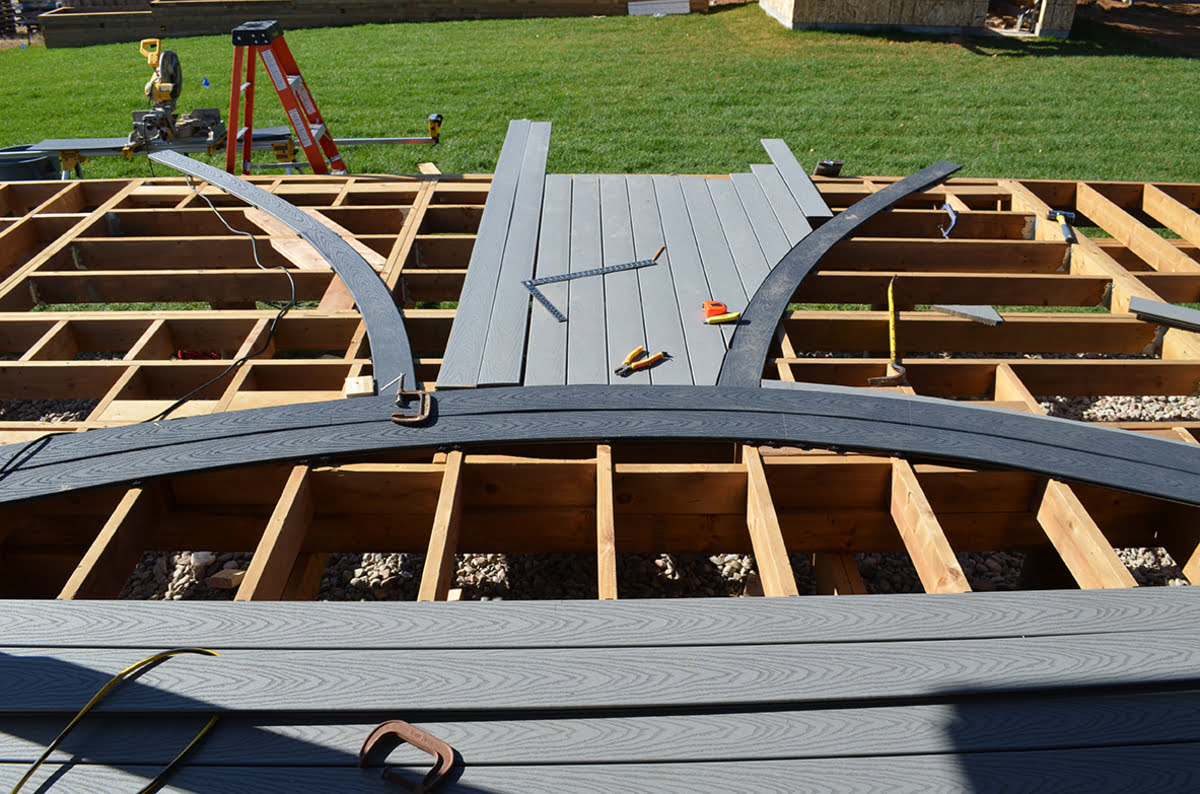

0 thoughts on “What Is Composite Decking Made Of”